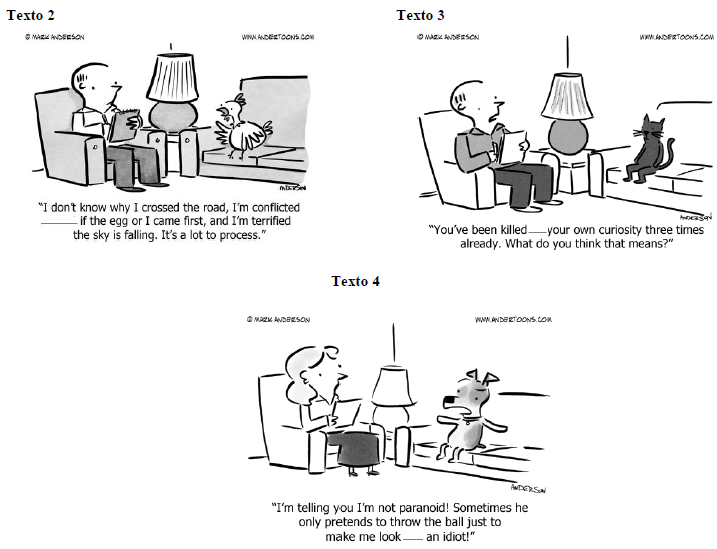Questões de Concurso Militar CBM-PE 2018 para Aspirante do Corpo de Bombeiros
Foram encontradas 5 questões

I. muitos pais questionam a violência nos desenhos animados e video games da atualidade, porém muitos de nós crescemos assistindo a desenhos como o Tom & Jerry, entre outros favoritos, em que a violência era um ingrediente-chave. II. especialistas na questão, como o Professor canadense Jonathan Freedman, não acreditam que a violência na mídia esteja necessariamente relacionada ao comportamento agressivo das crianças, citando, como exemplo, as crianças japonesas. III. as crianças ficam expostas a situações de violência presentes nos desenhos animados e contos de fadas desde muito cedo, sendo possivelmente essa a razão do comportamento violento e frequentemente encontrado nos dias de hoje. IV. os jovens que acessam jogos gráficos têm uma tendência maior para agir com menos violência, o que os leva ao isolamento e a viverem no limite, comportando-se de maneira estranha com seus pares. V. algumas crianças estão mais predispostas a ser afetadas pela violência na mídia do que outras, segundo o especialista Michael Grose. Ele acredita que os desenhos animados são bons para elas, porque personificam o desconhecido, apresentando-lhes o conflito, o drama e a dor de maneira indireta e impessoal.
Estão CORRETAS apenas

What is Sleeping Beauty without the evil threat of the jealous witch, or Snow White and the Seven Dwarfs without a nearfatal dose of poison that confronts children, perhaps for the first time, with the notion of suddenly losing a loved one? (3º parágrafo)
Considerando o contexto, assinale a alternativa que traz a sequência das palavras destacadas CORRETAMENTE traduzidas para o Português.



Considerando o contexto e gramática da língua inglesa, assinale a alternativa cuja palavras completam CORRETAMENTE as lacunas dos cartuns (textos 2, 3 e 4).